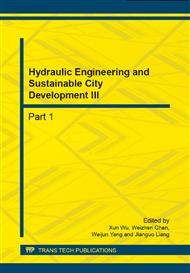p.1275
p.1280
p.1284
p.1287
p.1291
p.1295
p.1299
p.1303
p.1307
Research on Cloud Service Leasing Method Based on Maximum Benefit
Abstract:
In order to promote mutual benefit of service provider and requestor under the cloud computing environment, a new method to obtain maximum utility during cloud service leasing progress was proposed. Cloud service providers decide to tender or not according to their actual conditions and tender bid, and at the same time, it’s evaluation and other service providers’ recommends are considered during the bid evaluation by the service management center, the maximum utility will be computed among the servers provider and server requestor to determine which services bid. It showed great effectiveness of this method through a large number of simulation experiments.
Info:
Periodical:
Pages:
1291-1294
Citation:
Online since:
September 2014
Authors:
Keywords:
Price:
Сopyright:
© 2014 Trans Tech Publications Ltd. All Rights Reserved
Share:
Citation:


